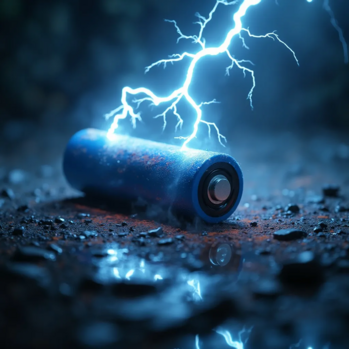18650 - how to charge?

18650 cell – how to charge?
Introduction
Cells of the 18650 format are the basic power element in varying regions of industrial electronics. They are being used in portable radios, unmanned flying vehicles, medical equipment and other high-tech products. To maintain the high operational reliability of the devices, it is important to strictly follow the technologies of charging and maintaining of said batteries.
Constructive specialties and parameters
A 18650 cell is a lithium-ion battery of a cylindrical form with a diameter of 18 mm and height of 65 mm. It is characterized by a high specific energy density, which allows it to be effectively used in compact devices. Standard working voltage is 3.7V, nominal capacity varies from 1800 to 4000 mAh.
Key advantages
- High energy intensity: supplies continuous autonomous power supply for devices.
- Resistance to cyclical loads: endures numerical cycles of charge/discharge without significant loss of capacity.
- Wide temperature range of operation: suitable for operating in harsh climatic environments.
- Continuous service life: extends 1000 cycles with correct maintenance.
Technologies and methods of charge
Use of specialized chargers
Charging should be done strictly using chargers that are specifically designed for lithium-ion batteries. Such devices stabilize the charging current and voltage, minimizing risks of overheat and breaking down.
Parameters of charge:
- Voltage: strictly 4.2V. Lithium-ion batteries are charged by CC-CV method, first by a constant current level (usually 0.5C-1C) until reaching maximum voltage (usually around 4.2V) and further with constant voltage level with decreasing current until end of charge.
- Current: from 0.5C to 1C from nominal capacity. For example, for a 3000 mAh battery the current will be from 1.5 to 3A.
Step-by-step procedure:
- Controlled connection with polarity check.
- Constant monitoring of the process using charge indication devices.
- Unplugging the battery after finishing charging to prevent overcharge.
Charging temperature conditions
Operating range of temperature during charging – from 0 °С to +45 °С. Charging outside these temperature ranges leads to quickened degradation of the electrochemical characteristics.
Recommendations for prolonging service life
- Avoid deep discharge below minimally accepted level
- Keep the temperature during operating within accepted range
- Do a regular diagnostics of the battery conditions using measurement devices.
Storage conditions
For optimal storage, it is optimal to charge the batteries to 30-50% of nominal capacity. Storage should be done in dry building with temperature within +15…+25 °С.
Advantages of maintaining storage conditions
- Minimization of capacity degradation
- Lowering the possibility of internal defects development
Practical recommendations
- Usage of charging systems with intellectual functions of temperature control and cell balancing
- Usage of batteries with integrated protection from overcharge and overdischarge
Conclusion
Correct organization of processes of charging, operation and storage of 18650 batteries allows to significantly increase the reliability of the end devices and prolong the service life of the power elements. Compliance with technological requirements is an mandatory condition of developing and serial production of the modern electronic equipment.
